We had a great foundation class last week with 14 students. I want to thank all of you who attended and look forward to seeing you again soon. One of the great things about teaching, is seeing the marked improvement by the end of six days in the students confidence and ability.
Here is another step in my canoe project. The next step was cutting the cedar planking. . . After spending so much time building the straightback and station molds, its kind of depressing to just now be starting on the canoe. 🙂
I started with 7 cedar boards, 3/4” thick x 5 1/2 wide x 19’ long! After cutting them to 17’ I resawed them on our 18” minimax bandsaw to 5/16”, (which was definitely a challenge) I had hoped the boards would be thicker then 3/4” but couldn’t find anything thicker. I then planed them to 1/4” and used a skil-saw blade on the tablesaw to rip all the wood into 3/4” strips.
Finally I set up the router with a 1/4” bead cutter and ran the strips through on one side, then put the cove cutter in the router and cut the other side of each strip. The cove is very fragile and easily breaks if it rubs against something, unfortunately I didn’t have a good way to hold or move the many pieces so the edges were damaged more than I expected. To fix the broken edges I will have to spend more time planing and sanding the hull of the canoe to made it smooth and even. Before attaching the planking to the molds, I shaped the stems so the cedar strips could have a flat spot to be glued to. As you plank up the canoe sides the profile on the stems change, so you can only shape about 5” at a time, plank it, then shape it again.
Jonathan Schwennesen
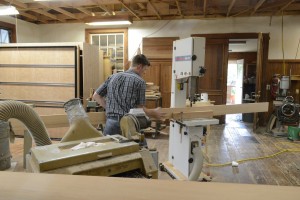
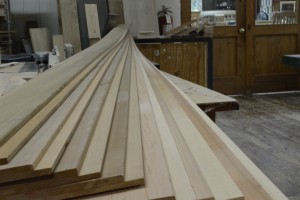
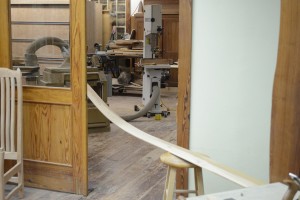
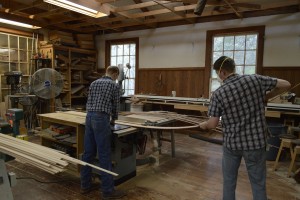
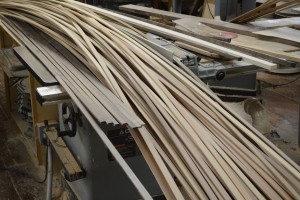
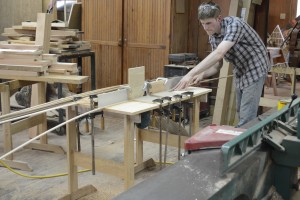


The canoe is looking great in these photos. This project is lots of fun and even more fun to take fishing or on a river trip.